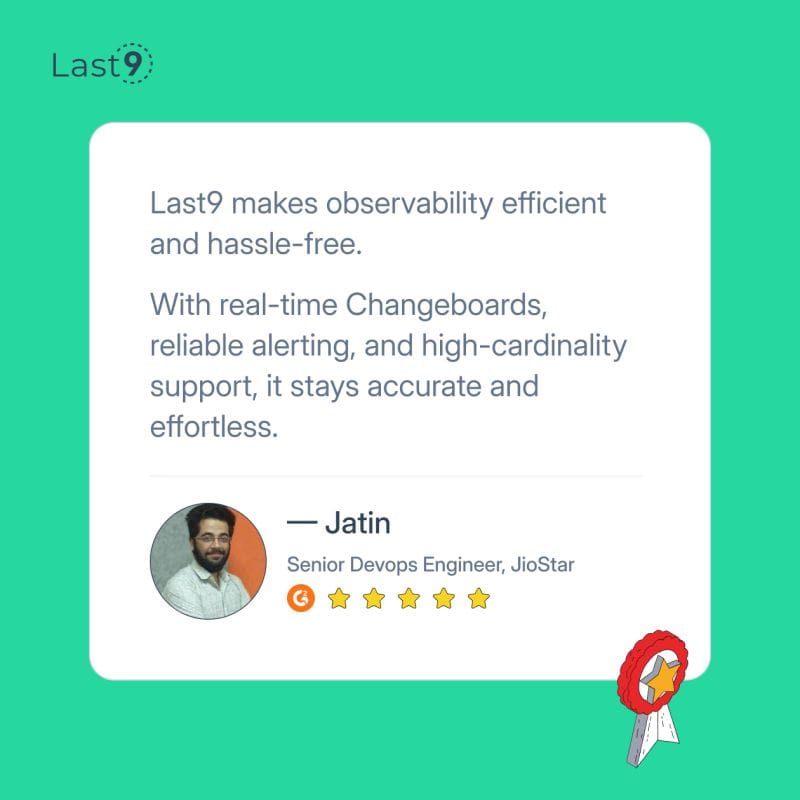If you've ever had a Java application slow down in production and struggled to pinpoint the cause, you know the pain of performance issues. Java is a powerful, high-level language, but it doesn’t come without challenges—especially when it comes to resource management, garbage collection, and thread handling.
This guide will take you through everything you need to know about Java performance monitoring, from key metrics to tools and best practices. By the end, you’ll have a concrete understanding of how to monitor, debug, and optimize your Java applications like a pro.
Why Java Performance Monitoring Matters
Performance issues can lead to frustrated users, higher infrastructure costs, and even system failures. If your Java application is sluggish, you risk losing customers, increasing downtime, and making your developers' lives miserable.
Effective performance monitoring helps you:
- Detect memory leaks before they bring down your system
- Optimize CPU and memory usage
- Identify slow database queries
- Debug long response times in APIs and web services
- Prevent thread contention and deadlocks
5 Key Metrics to Monitor in Java Applications
1. CPU Usage
CPU usage directly affects application speed and responsiveness. If your application is consuming too much CPU, it can slow down other processes and degrade overall system performance. Keep an eye on CPU utilization to identify expensive computations, inefficient loops, or infinite recursions.
How to Monitor CPU Usage
- Use JConsole or VisualVM for real-time CPU monitoring.
- Leverage Last9 to analyze CPU performance trends over time and correlate them with application behavior.
- Set alerts using Prometheus to detect high CPU usage anomalies.
2. Memory Usage & Garbage Collection
Memory management in Java is handled by the JVM, but inefficient memory usage can still lead to issues such as memory leaks and excessive garbage collection (GC) pauses.
Key Memory Metrics
- Heap memory usage: Tracks how much memory your application is using.
- Garbage collection frequency and duration: High GC pauses can slow down application performance.
- Object allocation rates: Helps detect memory leaks or excessive object creation.
How to Monitor Memory
- Java Flight Recorder (JFR): Captures detailed runtime performance data, including heap and GC analysis.
- VisualVM: Provides insights into memory allocation and GC pauses.
- Last9: Offers real-time monitoring of JVM memory metrics with deep analytics to detect anomalies.
3. Thread Activity
Java applications rely heavily on multi-threading, and unoptimized thread management can lead to issues like deadlocks, high contention, or excessive context switching.
Key Thread Metrics
- Active thread count: Indicates system load.
- Blocked threads: High numbers suggest resource contention.
- Thread pool utilization: Helps optimize concurrency.
How to Monitor Threads
- VisualVM: Displays active threads and their states.
- New Relic / Last9: Provides a breakdown of thread performance and contention.
- JConsole: Monitors thread states and detects deadlocks.
4. Response Time & Latency
Users expect fast response times, so tracking request latency is crucial. Identify slow endpoints and optimize your database queries, I/O operations, and caching strategies accordingly.
How to Monitor Response Time
- Prometheus + Grafana: Provides real-time dashboards for API performance.
- Last9: Tracks response time across distributed systems and correlates slow requests with underlying causes.
- AppDynamics: Offers deep transaction tracing to pinpoint slow operations.
5. Database Performance
Slow database queries and inefficient indexing can bottleneck performance. Monitor:
Key Database Metrics
- Query execution time: Helps identify slow queries.
- Connection pool usage: Ensures efficient database connections.
- Slow queries log: Captures problematic database operations.
How to Monitor Databases
- Last9: Provides real-time analytics on database performance, helping optimize queries and indexing.
- New Relic / AppDynamics: Offers insights into database queries and connection pooling.
- Prometheus: Monitors database queries and performance trends.
The Best 5 Tools for Java Performance Monitoring
Monitoring Java applications is essential for optimizing performance, diagnosing issues, and ensuring system stability.
Below are five of the best tools for Java performance monitoring, each with its own strengths and use cases.
JConsole
Overview
JConsole (Java Monitoring and Management Console) is a built-in Java monitoring tool that provides real-time insights into various aspects of a Java Virtual Machine (JVM).
It is bundled with the Java Development Kit (JDK), making it easily accessible for developers. With JConsole, users can monitor CPU usage, memory consumption, garbage collection, thread activity, and MBeans (Managed Beans) without requiring additional software installation.
Pros
- Lightweight and easy to use
- No additional installation required
- Provides real-time JVM performance metrics
- Suitable for quick debugging and analysis
Ideal For
- Basic JVM monitoring
- Debugging memory leaks and thread-related issues during development
User Feedback
Many developers find JConsole useful for quick performance checks and debugging. However, they note that it lacks advanced analytics, long-term data storage, and alerting capabilities, making it less suitable for production environments.
VisualVM
Overview
VisualVM is an advanced Java profiling tool that provides in-depth performance analysis of running applications.
It offers features such as thread analysis, heap dumps, garbage collection monitoring, and CPU profiling. VisualVM can be used to detect memory leaks, analyze thread behavior, and optimize application performance.
Pros
- Offers deep profiling and performance analysis
- Supports memory leak detection and heap dump inspection
- Provides real-time monitoring with low overhead
- Can attach to local and remote JVM instances
Ideal For
- Profiling Java applications in both development and production
- Debugging performance bottlenecks and memory issues
User Feedback
Developers appreciate VisualVM’s detailed insights and powerful profiling capabilities. However, some note that it has a steeper learning curve compared to simpler tools like JConsole.
Java Flight Recorder (JFR)
Overview
Java Flight Recorder (JFR) is a built-in low-overhead monitoring tool in the JVM, designed for continuous profiling of Java applications with minimal performance impact.
It collects detailed runtime data on CPU usage, memory allocation, thread activity, and I/O operations, making it suitable for production environments.
Pros
- Integrated into the JVM (from Java 11 onward)
- Minimal performance overhead compared to other profilers
- Provides detailed runtime analysis and event-based logging
- Useful for diagnosing performance issues in production
Ideal For
- Continuous performance monitoring in production environments
- Diagnosing latency and resource consumption issues
User Feedback
Users appreciate JFR’s ability to provide deep insights with minimal overhead. However, configuring JFR and analyzing the collected data can be complex, requiring some expertise in Java performance tuning.
Last9
Overview
If you’re looking for a managed observability solution that’s budget-friendly without compromising performance, give Last9 a try.
Last9, trusted by industry leaders like Probo, CleverTap, and more, is a Telemetry Data Platform designed to optimize cloud-native monitoring.
It balances performance, cost, and user experience while seamlessly integrating with OpenTelemetry, Prometheus, and other observability tools to unify metrics, logs, and traces.
Unlike traditional monitoring tools, Last9 excels in handling high-cardinality data efficiently. Our Control Plane enables smart alerting and real-time metric analysis, providing engineering teams with deeper insights into system performance and operational intelligence.

Pros
- Cloud-native and highly scalable
- Real-time performance monitoring and anomaly detection
- Smart alerting and automated insights
- Seamless integration with OpenTelemetry and Prometheus
- User-friendly UI for intuitive data visualization
Ideal For
- Large-scale Java applications with complex infrastructures
- Teams seeking automated insights and proactive issue detection
- Organizations managing high-cardinality telemetry data
User Feedback
Users appreciate Last9’s intuitive UI, powerful analytics, and ability to optimize observability costs while maintaining high performance.
Prometheus + Grafana
Overview
Prometheus is an open-source monitoring system designed for collecting and storing time-series performance metrics.
It is commonly paired with Grafana, a visualization tool that provides real-time dashboards for monitoring Java applications. Together, they enable detailed analysis of JVM metrics such as CPU usage, memory allocation, garbage collection, and request latency.
Pros
- Open-source and widely adopted
- Highly customizable for different monitoring needs
- Provides detailed and real-time visualizations with Grafana
- Scalable for monitoring large distributed systems
Ideal For
- DevOps teams managing Java applications at scale
- Cloud-native and containerized environments requiring extensive monitoring
User Feedback
Users appreciate the flexibility and powerful visualization capabilities of Prometheus and Grafana. However, they note that setting up and configuring the system requires careful planning, especially for large-scale deployments.
7 Java Performance Optimization Techniques
Optimizing Java applications for performance requires a combination of efficient coding practices, appropriate JVM tuning, and profiling techniques.
Below are key strategies for improving Java performance.
1. Choosing the Right Garbage Collector
Garbage collection (GC) plays a significant role in Java performance. The choice of GC depends on application requirements and workload patterns. Some commonly used collectors include:
- Serial GC – Best for single-threaded applications with small heaps.
- Parallel GC – Suitable for multi-threaded applications that require high throughput.
- G1 GC (Garbage First) – Ideal for applications with large heaps and low-latency requirements.
- ZGC & Shenandoah GC – Designed for ultra-low pause times in large-scale applications.
Tuning GC parameters using JVM options (e.g., -XX:+UseG1GC) can improve performance based on the application's needs.
2. Profiling and Identifying Bottlenecks
Using profiling tools such as JProfiler, VisualVM, or YourKit can help identify performance bottlenecks. Key areas to analyze include:
- CPU usage hotspots
- Memory leaks and excessive GC activity
- Thread contention and synchronization issues
- Slow I/O operations
3. Optimizing Critical Code Regions
Focusing on performance-critical sections of the code can yield significant improvements. Techniques include:
- Avoiding unnecessary object creation – Reduce memory pressure and GC overhead by reusing objects.
- Using efficient data structures – Choose
ArrayListoverLinkedListfor fast element access, or useHashMapwith properly overriddenhashCode()andequals()methods. - Reducing synchronization overhead – Use
ConcurrentHashMapinstead of synchronizedHashMapfor better performance in multi-threaded applications. - Inlining methods – The JVM Just-In-Time (JIT) compiler can inline frequently invoke small methods for performance gains.
4. Efficient String Handling
Strings in Java are immutable, which can lead to excessive object creation. Performance can be improved by:
- Using
StringBuilderinstead ofStringconcatenation (+operator) in loops. - Avoiding redundant string conversions (
toString()calls on primitives, for instance). - Using
intern()to manage repeated string instances when memory is a concern.
5. Optimizing Database and I/O Performance
Database queries and file I/O operations can introduce significant performance overhead. Optimization strategies include:
- Using connection pooling – Reduce overhead by reusing database connections (
HikariCP,C3P0). - Optimizing SQL queries – Use proper indexing and avoid fetching unnecessary columns.
- Batch processing – Minimize round trips to the database by executing batch inserts/updates.
- Buffered I/O – Use
BufferedReaderandBufferedWriterto minimize I/O latency.
6. Using JVM Performance Tuning
Tuning JVM parameters can have a substantial impact on performance. Some useful JVM options include:
-Xmsand-Xmx– Set initial and maximum heap size to reduce frequent GC.-XX:+UseStringDeduplication– Reduce memory footprint for repeated string objects.-XX:+UnlockExperimentalVMOptions -XX:+UseZGC– Enable low-latency garbage collection for large heaps.
7. Parallelism and Concurrency Improvements
Multi-threaded applications can benefit from efficient concurrency strategies:
- Using Fork/Join framework – Optimizes CPU-bound tasks by breaking them into smaller subtasks.
- Employing thread pools – Use
Executors.newFixedThreadPool()instead of creating new threads manually. - Reducing lock contention – Use
ReadWriteLockinstead ofsynchronizedwhere applicable.
Best Practices for Java Performance Optimization
1. Tune the JVM Settings
Adjust heap size (-Xms, -Xmx), garbage collection (-XX:+UseG1GC), and metaspace size (-XX:MaxMetaspaceSize) for optimal performance.
2. Optimize Garbage Collection
Choose the right GC algorithm based on workload (e.g., G1GC for low-latency applications).
3. Profile Your Code
Use profilers like VisualVM or JProfiler to find bottlenecks.
4. Use Connection Pools
Tools like HikariCP improve database performance.
5. Cache Expensive Operations
Use Redis, Caffeine, or Ehcache for caching frequently accessed data.
6. Monitor and Log Everything
Use ELK stack or Last9 for real-time log analysis.
Conclusion
Performance monitoring isn’t a one-time activity—it’s an ongoing process. Using tools like Last9, JConsole, and VisualVM, you can proactively optimize your Java applications and prevent costly slowdowns.



